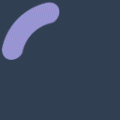

Glaucoma Today, Ophthalmology Glaucoma, and others
Find out how to monitor your eye pressure at home when living with glaucoma. Explore new devices, best practices for accurate readings, and how home monitoring can support your treatment plan.
In glaucoma care, intraocular pressure (IOP) is the main modifiable factor you and your doctor try to control, because pressure fluctuations or spikes can worsen optic nerve damage. Traditional office visits give only occasional “snapshots” of IOP, but your pressure may vary by hour, day, or posture.
Thanks to advances in home tonometry, you may now have the option to monitor your IOP outside the clinic. Home measurement can help detect pressure spikes you’d otherwise miss, better inform treatment, and possibly allow earlier adjustment of therapy.
Below is what you should know, including how it works, when it helps, its accuracy (with caveats), and how to use it safely and effectively in partnership with your eye doctor.
Several devices and technologies are now available (or in development) to help you measure eye pressure outside of the clinic:
Key takeaway: Today, most patients who monitor their eye pressure at home use rebound tonometers, such as the iCare Home. Newer tools are making self-testing easier, and continuous monitoring technologies may soon expand options.
Home devices are not perfect, and you need to understand their strengths and limitations. In a recent study of 104 glaucoma patients using iCare Home2, self-measured IOP had good reliability and repeatability, with average difference from Goldmann applanation tonometry (the clinical standard) of only –0.28 mmHg (±1.57 mmHg) in many cases.
However, agreement varies depending on corneal thickness, alignment errors, and user technique. Some patients (up to ~27 %) may struggle to use home devices properly. Additionally, rebound tonometers tend to underestimate very high pressures and overestimate very low pressures relative to Goldmann.
Therefore, it is recommended to use home measurements as a supplement, not a replacement, for your clinic IOP checks and other tests (visual fields, OCT).
When your eye doctor prescribes home monitoring, common protocols involve measuring IOP multiple times per day (morning, midday, evening) over a few days or a week. This helps capture daily fluctuations and spikes you might miss in the clinic.
Pick consistent times relative to your medication schedule (for example, before drops, two hours after) and posture (sitting upright, etc.). Note the time, your eye (right or left), and your position each time.
Practice runs under supervision, in the clinic or via telehealth, until you’re confident in proper alignment, positioning, and obtaining reliable readings.
Before you begin, have training from your eye care team. Mistakes in alignment, blinking, or probing too hard can lead to error or discomfort. Use the device only as instructed.
Record every measurement carefully (time, value, any notes). Many home tonometers are compatible with apps or software, allowing you to export data and share it with your physician.
If you notice a sudden, high spike (especially one that is significantly above your target range), contact your provider promptly. Don’t attempt to self-adjust medications without guidance.
Your ophthalmologist can review your home IOP curve trend over the day or week, rather than relying on a snapshot from a single visit. This may reveal spikes or fluctuations that require adjustments in treatment.
In fact, in published cases, home IOP monitoring led clinicians to intervene earlier, e.g., adding drops or performing laser treatment, in patients who otherwise appeared “stable” during clinic visits.
Additionally, some telemedicine models incorporate home tonometry data into remote glaucoma follow-ups, potentially reducing the need for in-office visits.
However, your provider should interpret the data in context (corneal thickness, measurement conditions) and correlate with imaging and visual field results.
Monitoring eye pressure at home with devices like iCare Home/Home2 or others provides you and your care team with a richer picture of your IOP behavior over time. While not perfect, these devices can help detect spikes, guide therapy, and improve your disease control. Always undergo training, document carefully, and use the data in partnership with your ophthalmologist, not as a substitute.
Sources
To ensure that we always provide you with high-quality, reliable information, The Glaucoma Community closely vets all sources. We do not, however, endorse or recommend any specific providers, treatments, or products, and the use of a given source does not imply an endorsement of any provider, treatment, medication, procedure, or device discussed within.
Source: {{articlecontent.article.sourceName}}
Receive daily updated expert-reviewed article summaries. Everything you need to know from discoveries, treatments, and living tips!
Already a Responsum member?
Available for Apple iOS and Android
Add Comments
Cancel